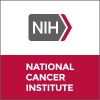Interleukin-12 and Interleukin-2 in Treating Patients With Refractory or Recurrent Neuroblastoma
Recurrent Neuroblastoma

About this trial
This is an interventional treatment trial for Recurrent Neuroblastoma
Eligibility Criteria
Inclusion Criteria: Diagnosis of neuroblastoma Histologically confirmed disease AND/OR disease defined by tumor cells in the bone marrow and elevated urinary catecholamine metabolites Persistent and/or refractory disease, with at least 1 of the following: Biopsy-proven residual disease at least 12 weeks after myeloablative therapy Progressive disease after nonmyeloablative or myeloablative therapy Recurrent disease, evidenced by any of the following: Biopsy-proven recurrent soft tissue disease Metaiodobenzylguanidine (MIBG)-positive lesions visible on any other imaging modality or repeat MIBG obtained 2-4 weeks or more apart Histologically confirmed bone marrow disease Progressive or stable disease after at least 1 prior standard salvage regime No clinically significant pleural effusion ECOG 0-1 Life expectancy >= 12 weeks Hepatitis A antibody negative Hepatitis B surface antigen negative Positive hepatitis B titer allowed if patient has been immunized and has no history of disease Hepatitis C virus negative No history of congenital or acquired coagulation disorder Cardiac function normal by ECG No dyspnea at rest No exercise intolerance Oxygen saturation at least 94% by pulse oximetry DLCO greater than 60% of predicted FEV1 greater than 70% of predicted Negative pregnancy test Skull-based bony lesions without space-occupying intracranial extension are allowed No prior or concurrent intracranial metastatic disease to the brain parenchyma Not pregnant or nursing Fertile patients must use effective barrier contraception during and for at least 2 months after study No prior hematologic malignancy (including leukemia or lymphoma) No history of malignant hyperthermia No prior or concurrent autoimmune disease No positive direct Coombs testing No history of ongoing or intermittent bowel obstruction No active infection or other significant systemic illness More than 2 weeks since prior fenretinide More than 2 weeks since prior 13-cis-retinoic acid More than 2 weeks since prior filgrastim (G-CSF) or sargramostim (GM-CSF) More than 2 weeks since prior interferons or interleukins More than 2 weeks since prior cytokine-fusion proteins More than 2 weeks since prior IV immunoglobulin (IVIG) No prior interleukin-12 No concurrent cytokines No concurrent fenretinide No concurrent 13-cis-retinoic acid No other concurrent immunomodulators, including: G-CSF and GM-CSF Interferons Other interleukins IVIG More than 4 weeks since prior chemotherapy No other unstable medical condition or critical illness that would preclude study participation More than 12 weeks since prior myeloablative chemotherapy followed by autologous stem cell transplantation: No prior myeloablative chemotherapy followed by allogeneic bone marrow transplantation More than 2 weeks since prior growth hormones More than 4 weeks since prior systemic corticosteroids More than 2 weeks since prior non-corticosteroid hormonal therapy (including oral birth control pills) No concurrent hormonal therapy (including oral birth control pills) No concurrent growth hormones No concurrent systemic corticosteroids, except for use in life-threatening complications More than 4 weeks since prior radiotherapy No prior solid organ transplantation More than 4 weeks since prior investigational agents No other concurrent investigational agents No prior enrollment on COG-A3973, unless disease has progressed No history of hemolytic anemia Absolute neutrophil count at least 1,500/mm^3 [Note: Independent of growth factor or transfusion support] Platelet count at least 75,000/mm^3 [Note: Independent of growth factor or transfusion support] AST and ALT less than 2.5 times upper limit of normal Bilirubin less than 2.0 mg/dL Creatinine clearance or radioisotope glomerular filtration rate at least 70 mL/min OR creatinine normal HIV negative Ejection fraction at least 50% by echocardiogram or MUGA OR Fractional shortening at least 30% by echocardiogram No congestive heart failure No uncontrolled cardiac arrhythmia
Sites / Locations
- New Approaches to Neuroblastoma Treatment (NANT)
- Children's Hospital Los Angeles
- Lucile Packard Children's Hospital Stanford University
- University of California at San Francisco - Comprehensive Cancer Center
- AFLAC Cancer Center and Blood Disorders Service
- Childrens Memorial Hospital
- Riley Hospital for Children
- Children's Hospital Boston
- University of Michigan University Hospital
- Cincinnati Children's Hospital Medical Center
- Children's Hospital of Philadelphia
- Texas Children's Hospital
- Seattle Children's Hospital
- University of Wisconsin Hospital and Clinics
Arms of the Study
Arm 1
Experimental
Treatment (IL-12, aldesleukin)
Cohort A: Patients receive interleukin-12 (IL-12) IV over 5-15 seconds on days 1, 3, 5, 8, 10, and 12. Cohort B: Patients receive interleukin-2 (IL-2) IV over 15 minutes twice daily on days 1 and 8 and IL-12 IV as in cohort A. Treatment in both cohorts repeats every 28 days for up to 4 courses in the absence of disease progression or unacceptable toxicity. Some patients may receive additional courses at the discretion of the principal investigator. Cohorts of 3-6 patients in both cohorts receive escalating doses of IL-2 and IL-12 until the maximum tolerated dose (MTD) is determined. The MTD is defined as the dose preceding that at which 2 of 3 or 2 of 6 patients experience dose-limiting toxicity. Once the MTD is determined, an additional cohort of 8 patients receives IL-12 and IL-2 at the MTD.
Outcomes
Primary Outcome Measures
Secondary Outcome Measures
Full Information
1. Study Identification
2. Study Status
3. Sponsor/Collaborators
4. Oversight
5. Study Description
6. Conditions and Keywords
7. Study Design
8. Arms, Groups, and Interventions
10. Eligibility
12. IPD Sharing Statement
Learn more about this trial
